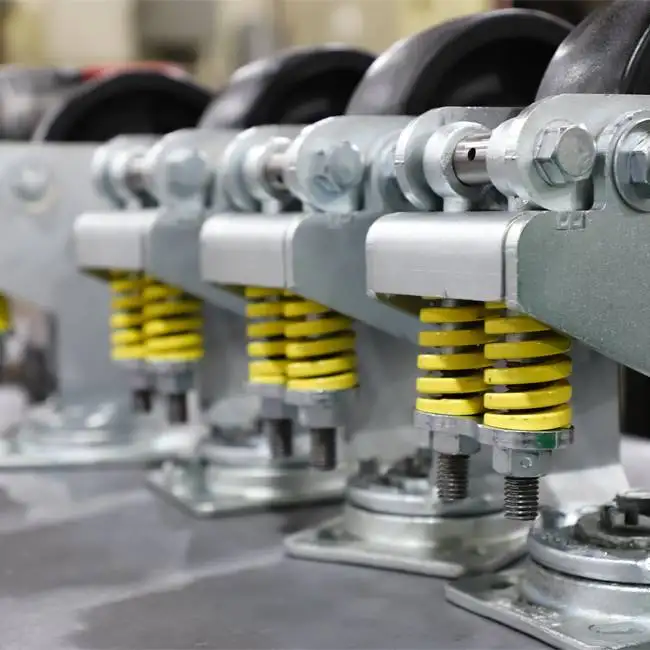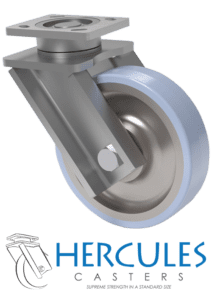

The focal point of this blog will be shock loading. I will define shock loading so that users, customers, and anyone who wants to gain a little caster knowledge can understand. I will also discuss a few different ways that shock loading can occur. And in case you didn’t know, I will discuss why shock loading is bad and how it can be hazardous to your wallet.
Shock loading is when a significant amount of weight or force is suddenly dropped on top of a caster or when a caster is hit with a sudden side impact. To those disappointed that shock loading isn’t about building up an electrical charge on wheels, that is a real thing. For that, Electrostatic Discharge (ESD) wheels are available to help combat static electricity buildup. But hey, we are here to talk about shock loading, so let’s get to it.
When considering the force you are putting on your casters, heavy duty casters are designed to carry enormous amounts of weight when they are outfitted with the correct components. In some extremely heavy-duty applications, a dual-wheel caster with polyurethane wheels can still reach a load capacity of 50,000 pounds.
On these rare occasions, you must allow for huge wheels that may be as large as 28 inches in diameter and 16 inches in width. But they do exist in certain industries. Some of these industries include aerospace, ground support equipment, manufacturing, or even the marine industry for moving large boat molds during production.
I say this to demonstrate that getting to a required load capacity isn’t the issue. The problem is that the load being carried isn’t meant to be dropped suddenly on a cart. That is when the load can damage the casters carrying it. The load is intended to be placed over the casters, not slammed onto them, because that multiplies the force being put on the casters, and they aren’t meant to be handled with that kind of aggression. This can damage the swivel section, and if that does happen, you will want to look at going to a swivel section rated at twice the capacity needed for your application.
There are a few other ways that shock loading can occur that people may not think about. Take, for example, that instead of the weight being dropped on top of a cart, the cart itself is being dropped on the floor. This may happen if unloaded carts are stacked on top of each other at the end of a shift. And then, at the start of the next day, instead of carefully unstacking the carts, they are just pushed over.
 This can cause serious damage from the impact on the floor and may even result in a catastrophic failure of the caster because they are not meant to take that kind of abuse. This most likely will lead to one caster taking the brunt of the force, and that will eventually lead to it needing replacement.
This can cause serious damage from the impact on the floor and may even result in a catastrophic failure of the caster because they are not meant to take that kind of abuse. This most likely will lead to one caster taking the brunt of the force, and that will eventually lead to it needing replacement.
Side Impact is another way that shock loading may occur. This may happen from things such as a forklift or other equipment running into a cart or caster, which will put force on the bearings, swivel sections, and other components in ways that are not meant to take sudden impact. For this type of situation, the Hercules Caster features reinforced legs to prolong the life of the caster in abusive applications.
A caster may also experience shock loading during movements such as being pulled by a tugger, AGV, or another type of vehicle. This shock loading may come in the form of going over a bump or a pothole or running into or going over a curb. Even sharp turns at higher than recommended rates of speed can cause shock loading and possible damage or break a caster completely.